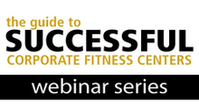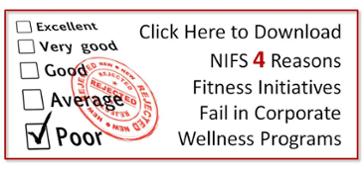What’s happening in corporate wellness programs right now could be characterized as something of a revolt. Well, revolt might be a little dramatic (don’t think Arab Spring), but perhaps it’s more appropriate to say that those who are the target of carrot/stick employee wellness strategies are pushing back.
They’re pushing back on what has been conventional wisdom for a while: that health-risk assessments and biometric screenings are central (dare I say foundational?) to a sound, data-driven corporate wellness initiative. Employees are pushing back on penalties for not playing, and they’re pushing back on programs that brand failure for anyone who doesn’t achieve arbitrarily selected thresholds for biometric markers. They’re growing intolerant of workplace cultural norms that scream hypocrisy in the face of company wellness policies.
As someone involved in the world of corporate health, you’d think I would land squarely on the side of gathering the data and using it to capture ROI. But I don’t; it’s just not that black and white.
Why All the Numbers All of the Time?
What I’m seeing in the industry is that corporate wellness providers bow to the number-focus of the CFO or the CEO and communicate in ROI-speak that uses words and phrases like engagement and human capital. To the untrained eye, you’d think “engagement” and “human capital” would have something to do with…well, humans. But it turns out, most of the time they have more to do with participation quotas, biometric thresholds, and productivity benchmarks than with the actual people who need tools, resources, and support to make healthier choices.
Wellness vendors position and market themselves by spouting figures and “facts” (and I use that word loosely), quoting studies and experts (should I use that word loosely, too?). They put into print ridiculous statistics that have ridiculous consequences—all in the name of numbers, data, and ROI.
Raise Your Hand If You Launched a Career in Corporate Wellness to Calculate ROI.
Accountants are passionate about numbers. Fitness specialists are passionate about people. Seriously, most of us got into this business because we were passionate about forming relationships with people so that they would trust we had their best interest in mind when we suggested resources that would help them make healthier choices. As an industry, we’ve largely forgotten our roots, which grew from wanting to help people.
So who’s to blame? Maybe this isn’t the CEO’s fault; maybe it’s just the way of the world. Maybe it’s the almighty dollar we should be blaming. (I predict a comment that blames the government.) Who knows, maybe it’s my fault. I don’t know where the blame goes, but I don’t think it really matters at this point. We’ve simply swung the pendulum too far onto the numbers side of the equation and we forgot about the people.
You know, the people—the individuals who have complicated, busy, overwhelming and typically unhealthy lives. Like the 56-year-old woman with high blood pressure and back pain who is raising her grandchildren and who has no time to take care of herself. Or the single working parent who works by day, goes to school by night, and who is doing everything he can to ensure his daughter has a better life. He struggles to find time to grocery shop, not to mention cook a meal. And then there’s the hourly call center employee who feels hovered-over by her supervisor, who smokes (though she wants to quit but isn’t sure where to start), and who is pregnant with her first child.
These Employees Need Our Help.
They need a relationship with a wellness professional who cares more about the individual accomplishments of the few than the participation quota of the company. They need someone to stand up and say, “I care about you, and I am here to listen to you, to help you find the tools and resources you need. I’m here to help you celebrate your successes and pick you up when you falter on your path to better health.”
Because at the end of the day, if we don’t move the needle on the health of the individuals, then the corporate strategy means nothing. If the only behavior we incentivize is for people to go get their wellness forms signed so they can “get cash for doing it,” we’ve missed an opportunity.




 In this blog series, we’re focusing on why fitness fails as part of a corporate wellness strategy. The first two truths looked at how
In this blog series, we’re focusing on why fitness fails as part of a corporate wellness strategy. The first two truths looked at how 

 Truth #1: Fitness initiatives fail as part of a corporate wellness strategy because of a lack of programming creativity.
Truth #1: Fitness initiatives fail as part of a corporate wellness strategy because of a lack of programming creativity. 
 In
In  We sit. Frankly, we sit a lot. We sit at home, we sit on our commutes, we sit at work, we sit during our child’s after-school activities. Sit, sit, sit. And it’s not doing us any favors, either. In fact, recent startling statistics indicate that sitting may be a significant threat to our overall wellbeing.
We sit. Frankly, we sit a lot. We sit at home, we sit on our commutes, we sit at work, we sit during our child’s after-school activities. Sit, sit, sit. And it’s not doing us any favors, either. In fact, recent startling statistics indicate that sitting may be a significant threat to our overall wellbeing.
 has it all figured out). But to promote it in a way that engagement from employees is something you go "get", that it's algebraic or formulary, that there is something you simply add to your corporate wellness strategy recipe, is completely off the mark. You don't add a vendor, a worksite fitness center, a health coach, or change a policy about flex time and BAM! Engagement! (Cue triumphant music.)
has it all figured out). But to promote it in a way that engagement from employees is something you go "get", that it's algebraic or formulary, that there is something you simply add to your corporate wellness strategy recipe, is completely off the mark. You don't add a vendor, a worksite fitness center, a health coach, or change a policy about flex time and BAM! Engagement! (Cue triumphant music.)
 with your company, she ventures into the onsite fitness center to take a look. She makes a connection with the compassionate staff and within a few weeks of her hire date, she starts exercising in your fitness center. One year later, she is 15 pounds lighter, free from depression medication, and getting better sleep each night. She has less out-of-pocket expense (measureable), the company is paying less for her health care (measureable), and she is more productive for and loyal to your organization for the support she received in the corporate fitness center (unquantifiable).
with your company, she ventures into the onsite fitness center to take a look. She makes a connection with the compassionate staff and within a few weeks of her hire date, she starts exercising in your fitness center. One year later, she is 15 pounds lighter, free from depression medication, and getting better sleep each night. She has less out-of-pocket expense (measureable), the company is paying less for her health care (measureable), and she is more productive for and loyal to your organization for the support she received in the corporate fitness center (unquantifiable). ROI and corporate wellness is, well, it's tricky. Don't believe me? Ask the experts. They’ll tell you that accurately calculating ROI can be done, but that it is very hard to do it the right way. What’s worse is that attempting to isolate ROI for a specific element of your company’s wellness strategy may prove even more elusive.
ROI and corporate wellness is, well, it's tricky. Don't believe me? Ask the experts. They’ll tell you that accurately calculating ROI can be done, but that it is very hard to do it the right way. What’s worse is that attempting to isolate ROI for a specific element of your company’s wellness strategy may prove even more elusive.